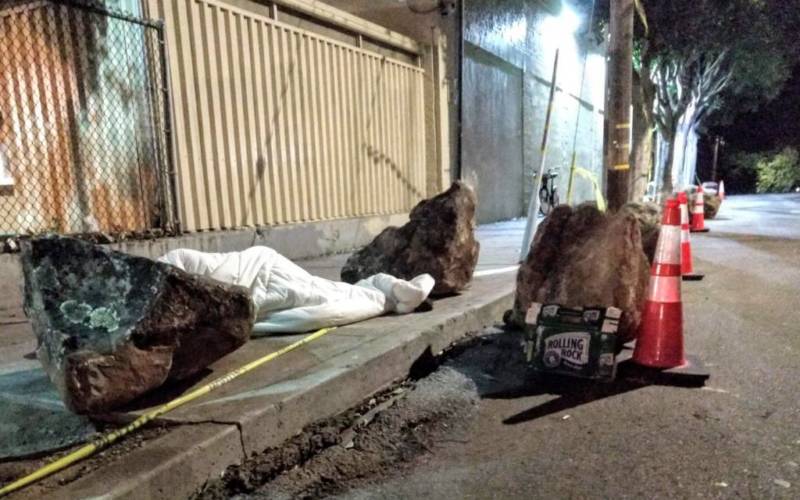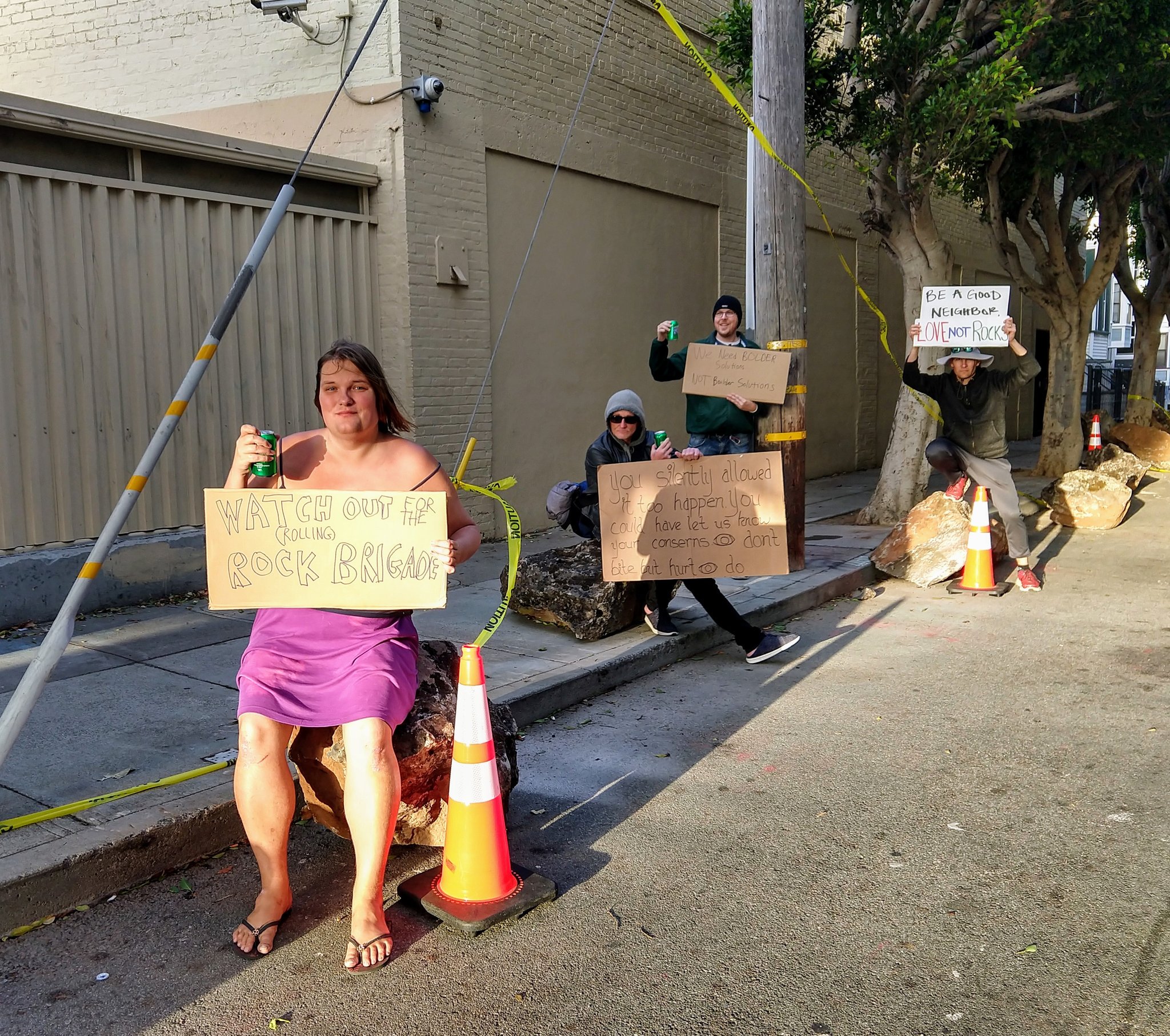Since the start of the year, neighbors had called 311 and 911 hundreds of times, the San Francisco Chronicle reported, detailing scenes of round-the-clock drug use, needles scattered on the sidewalk and inebriated homeless people cooking on open flames and raucously partying late into the night.
After the city failed to resolve the situation, neighbors took matters into their own hands: Without official sanction, they rolled out the hefty boulders, positioning them to occupy prime sidewalk real estate — a geologically inspired effort to clear the area. (They reportedly raised $2,000 via GoFundMe for the boulders).
It didn’t work out quite as they had hoped.
As word of the boulders spread among homeless advocates — after it was first reported by Hoodline last week — Clinton Park neighbors soon realized that in their bid to put out one fire, they’d ignited a much larger firestorm that hits at the heart of San Francisco’s most pressing and divisive issue: how to handle the city’s seemingly intractable homeless crisis.
Activists converged nightly on Clinton Park, a narrow byway off Market Street, to push the boulders off the sidewalk into the street. Some, according to the Chronicle, reportedly harassed neighbors with threatening messages on social media, accusing them of being anti-homeless and inhumane and resorting to cruel, passive-aggressive Band-Aid tactics, rather than working toward real solutions.
“All you had to do is come and say something to us. We’re all pretty reasonable people and we’re very kind,” Daniel Bartosiewicz, a homeless person who had camped at Clinton Park for months, said in a Twitter video. “All of you guys just would smile and walk by and silently act like everything was OK instead of coming and confronting us.”
One demonstrator tried, unsuccessfully, to auction the rocks on Craigslist, a post that was quickly removed.


